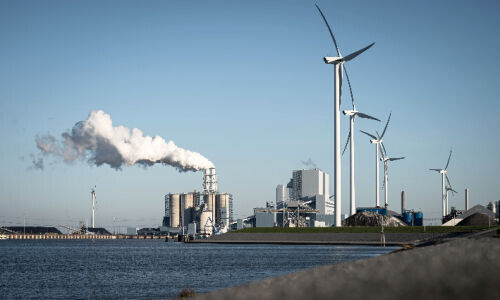There is an immense need to modernize infrastructure despite increasing calls for a climate-neutral economy. Blackrock has a new investment strategy for that.
Blackrock is showing everyone how private markets can help with the energy transition. According to an announcement sent by the world's largest asset manager, it has created a new strategy that helps direct investment into long-term structural trends in the infrastructure sector.
Currently, there is a large investment gap in that area, and experts believe private investors could cover two-thirds of the shortfall as about 125 trillion dollars are needed by 2050, at least according to some forecasts.
First in Line
To start with, the North American asset manager is putting the onus of its infrastructure strategy on Europe where half the required investment is aimed at accelerating the energy transition and better ensuring power supplies.
Blackrock believes that the global change underway to shift towards a greener economy opens up many attractive investment opportunities in the areas of digital and communal infrastructure, and sustainable mobility.
Utilities and end-to-end suppliers of renewable energy are directly on Blackrock's radar. But it is also looking at investments in data centers, network digitalization technology, and battery storage systems. According to the head of Blackrock Switzerland, Mirjam Staub-Bisang, infrastructural investments are ideal for long-term investors such as Swiss retirement funds given their extended durations.
Ukraine War Threatens Energy Supplies
Concerns about energy security have risen since the start of the Ukraine war. Blackrock is predicting that reducing the dependency on Russian oil and gas will accelerate progress to climate neutrality in Europe in the long term. But not every country is going to progress at the same pace, a trend that is likely to become accentuated worldwide.
In Europe, the situation could become difficult for Germany and Italy according to Staub-Bisang, as both are still strongly dependent on Russian gas supplies. That is a big contrast to the US, which is already largely self-sufficient and well prepared to make the transition needed to its economic structures thanks to its sources of energy.
Weaker Countries
Blackrock is a recent example of how investors are closely looking at the infrastructure markets. The renaissance, which is being seen worldwide, can be traced back to the fact that many countries have neglected to make the necessary investments in infrastructure for decades now. The Global Infrastructure Hub estimated as far back as 2017 that the worldwide requirement for infrastructural investment correlated to about 3.5 percent of GPD up to and including 2040. According to market observers, it is financially straightened countries that will need to rely on private investors for modernizing and ensuring supplies of energy, electricity, water, transport, and telecommunication.
According to a Credit Suisse analysis, renewable energy will comprise 90 percent of electricity production by 2050, up from 28 percent today. That will be helped by the fact that wind and solar energy is already cheaper to produce than coal or nuclear sources.
Regulated Markets, Stable Returns
In infrastructure, the initial investment outlay is usually high while the operating costs are low. Companies in the sector are often in monopolistic markets with high entry barriers, which is reflected in how prices are set. In electricity, tariffs are set by public authorities, and distribution to private customers is usually bound by long-term agreements.
Market observers say this leads to a situation where infrastructure companies benefit from long-term contracts and predictable sources of demand, allowing them to benefit from stable, growing revenues and dividends.




































